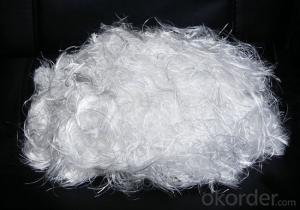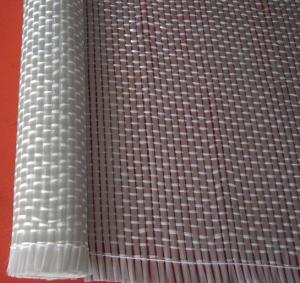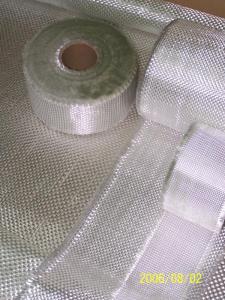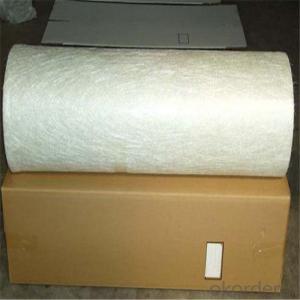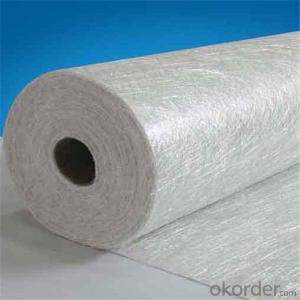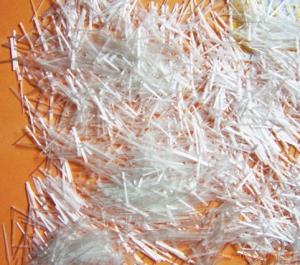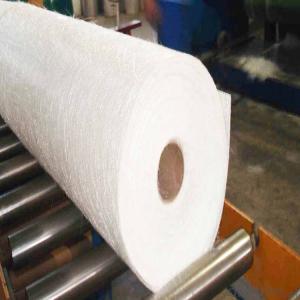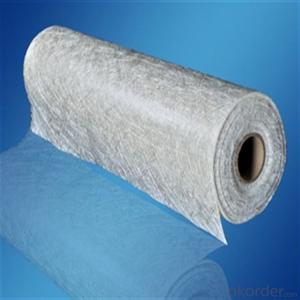High Silica Chopped Strands
- Loading Port:
- China Main Port
- Payment Terms:
- TT or LC
- Min Order Qty:
- 4000 kg
- Supply Capability:
- 5000000 kg/month
OKorder Service Pledge
OKorder Financial Service
You Might Also Like
Product Description
Silica fiberglass is inorganic fiber that contents more than 96% of SiO2, it's resistant to high temperature, soft point 1700°C, long term service temperature 900 °C, it can work 10 minites at 1450 °C and keeps good state at 1600 °C for 15 seconds. For it's properties of chemical stability, high temperature resistance and ablation resistance, it widely used in aviationand aerospace, metallurgy, chemical, building material and fire fighting industry, etc.
Our factory is the only one that specialized manufacture silica fiberglass in China and has the production line of the whole process from marble making, fiber forming, weaving, and finish. The strength of silica fiberglass made from Na2O-B2O3-SiO2 system glass is 3-5 times higher than that from E glass. The products sold to more than 20 provinces, cities, autonomous regions and exported to foreign countries.
Silica fiberglass products are available in forms of needled mat, fabric, scrim, staple yarn, chopped strand and cord, etc.
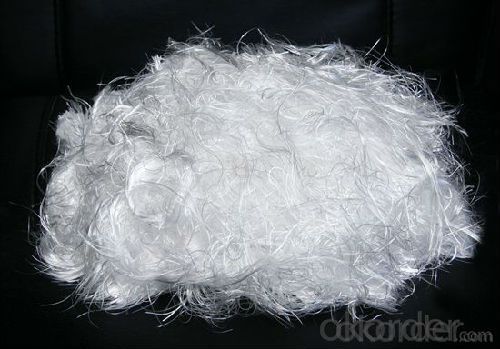

Specification
| Product Code | SCD-06 | SCF-60 | SCD-06-S | SCF-60-S |
| Length(mm) | 6 | 60-100 | 6 | 60-100 |
| Diameter | 6um/9um | 6um/9um | 6um/9um | 6um/9um |
| L.O.I.% | 7-12 | 7-12 | ≤5 | ≤5 |
Product Application
· High temperature resistant, insulation and sealing material
· High temperature ablation resistant material
· Fireproof material (for fireproof protective clothe, fireproof curtain, fire blanket)
· Dust collecting in media of high temperature gas and filtration in media of high temperature liquid
· Filter for molten metal
· Distinguisher, insulation material, filtration of automobile and motorcycle
· Protective material for welding
· Electricity insulation material
Package and delivery time
Package:High silica chopped strand is packed with bags and pallets,totally 20 pallets one 20GP.
Delivery time:The products will be ready in 7-15 days after the confirmation of the order.
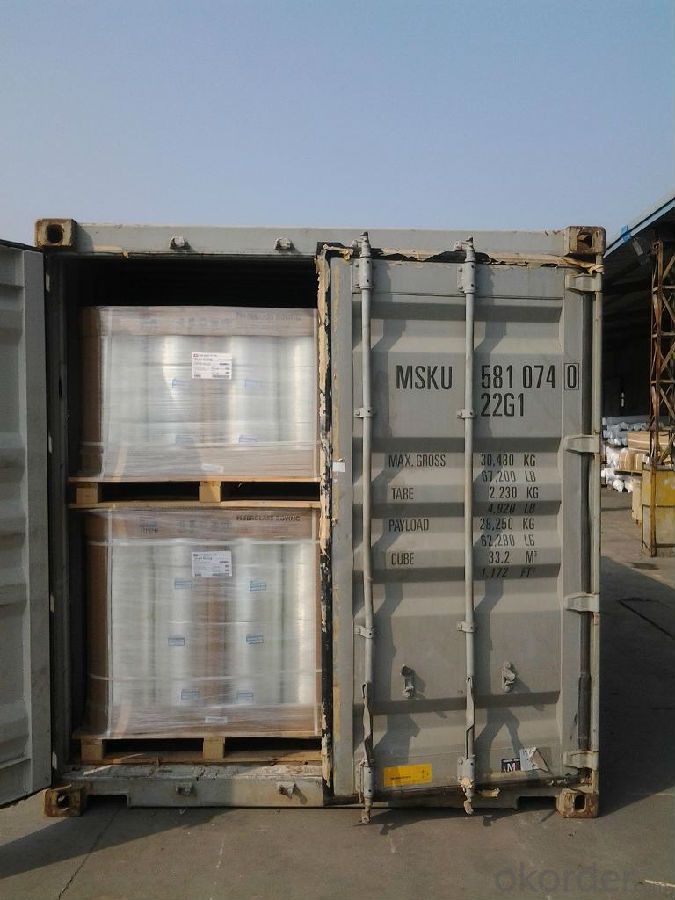
FAQ
Q: Can you accept sample order?
A: Yes, we accept samples with little and reasonable charge
Q:What is your delivery time?Can we short it in 7 days or less?
A: 3 days for sample, 3-25 days for mass production(depend quantity).
- Q:How does the fire resistance of fiberglass chopped strand compare to other reinforcing materials?
- The fire resistance of fiberglass chopped strand is generally superior to many other reinforcing materials. Its inherent properties allow it to withstand high temperatures and prevent the spread of flames, making it a desirable choice for various applications where fire safety is a concern.
- Q:What is the typical length of fiberglass chopped strand?
- The typical length of fiberglass chopped strand is around 1 to 3 inches.
- Q:Can fiberglass chopped strand be used in the production of electrical insulation materials?
- Yes, fiberglass chopped strand can be used in the production of electrical insulation materials. Fiberglass is known for its excellent electrical insulation properties, making it an ideal choice for applications where electrical insulation is required. The chopped strand form of fiberglass consists of short fibers, which can be mixed with other materials and processed to create various insulation products such as tapes, sheets, and coatings. The chopped strand form allows for better dispersion and distribution of the fibers within the material, enhancing its electrical insulation capabilities. Additionally, fiberglass chopped strand is also resistant to high temperatures, chemicals, and moisture, further contributing to its suitability for electrical insulation applications.
- Q:How is the creep resistance of fiberglass chopped strand composites tested?
- Fiberglass chopped strand composites are commonly tested for their creep resistance using a range of methods. One approach involves subjecting the composite material to a constant load or stress for an extended duration, typically at higher temperatures. This method, known as the creep test, allows for the evaluation of the composite's ability to resist deformation and maintain its structural integrity under prolonged load conditions. Throughout the creep test, the composite specimen is placed under constant stress, and its deformation is continuously measured over time. Specialized equipment, such as a creep testing machine, applies the desired load and monitors the deformation. Elevated temperatures are utilized during the test as creep is more apparent under such conditions. The outcomes of the creep test are typically represented as creep curves, which illustrate the relationship between deformation and time under the applied stress. These curves offer valuable insights into the creep behavior of the fiberglass chopped strand composite, including the rate of deformation, the time-dependent nature of creep, and the potential for failure. By assessing the creep resistance of fiberglass chopped strand composites, manufacturers and researchers can determine their suitability for various applications, such as structural components in construction, automotive parts, and aerospace components. This testing ensures that the composite material can endure long-term loading without excessive deformation or failure, instilling confidence in its performance and durability.
- Q:What are the typical hardness properties of fiberglass chopped strand composites?
- The typical hardness properties of fiberglass chopped strand composites can vary depending on the specific composition and manufacturing process. However, in general, fiberglass composites are known for their excellent hardness properties. Fiberglass chopped strand composites typically exhibit a high level of hardness due to the reinforcing nature of the glass fibers. These fibers are usually embedded within a matrix material, such as resin, which provides additional strength and stability to the composite. The hardness of fiberglass chopped strand composites is often measured using the Rockwell hardness scale or the Vickers hardness test. These tests evaluate the resistance of the material to indentation or penetration by a harder material. The hardness properties of fiberglass chopped strand composites are influenced by several factors, including the length and orientation of the glass fibers, the type of resin used, and the overall fiber-to-resin ratio. Generally, longer and more aligned fibers tend to enhance the hardness of the composite. Fiberglass composites are commonly used in various industries, including automotive, aerospace, construction, and marine, due to their exceptional hardness properties. They offer excellent resistance to abrasion, impact, and deformation, making them suitable for applications that require durability and strength. It is important to note that the specific hardness properties of fiberglass chopped strand composites can vary depending on the specific application requirements and the manufacturing process used. Therefore, it is advisable to consult the manufacturer or conduct specific tests to determine the exact hardness properties of a particular fiberglass chopped strand composite.
- Q:How does the weight of the chopped strand affect its performance?
- The weight of the chopped strand has a significant impact on its performance. Chopped strands are typically used as reinforcement in composite materials, such as fiberglass, to enhance their strength and durability. The weight of the chopped strand directly affects the amount of reinforcement that is added to the composite material. A higher weight of chopped strand means that more fibers are added to the composite, resulting in increased strength and stiffness. This is because the fibers act as structural reinforcements, distributing the load and preventing crack propagation. Consequently, materials with heavier chopped strand reinforcement can withstand higher stress and have improved resistance to impact and fatigue. On the other hand, a lower weight of chopped strand may be preferred in certain applications where flexibility or weight reduction is desired. For example, in applications where the composite material needs to be lightweight or flexible, a lower weight of chopped strand can be used to maintain the desired mechanical properties while reducing the overall weight of the final product. It is important to note that the weight of the chopped strand alone does not determine the performance of the composite material. Other factors, such as the length and orientation of the fibers, the resin matrix used, and the manufacturing process, also play critical roles in determining the overall performance of the composite material. Therefore, it is essential to consider these factors in conjunction with the weight of the chopped strand when designing and engineering composite materials.
- Q:How does the fiber orientation of fiberglass chopped strand affect its strength?
- The fiber orientation of fiberglass chopped strand has a significant impact on its strength. Fiberglass chopped strand consists of numerous short fibers that are randomly oriented. This random orientation leads to a relatively isotropic material with strength properties that are similar in all directions. When the fibers are randomly oriented, they are able to distribute the applied load more uniformly throughout the material. This random distribution of fibers prevents the concentration of stress in a particular direction, enhancing the overall strength of the fiberglass chopped strand. In contrast, if the fibers were aligned in a specific direction, the material would become anisotropic, meaning its strength properties would vary depending on the direction of the applied load. This would result in weaker areas where the fibers are not aligned with the applied load, as the load would not be effectively distributed throughout the material. Therefore, the random fiber orientation of fiberglass chopped strand plays a crucial role in its strength, allowing it to exhibit relatively consistent strength properties in all directions and making it suitable for a wide range of applications that require strength and durability.
- Q:Is fiberglass chopped strand resistant to extreme temperatures?
- Fiberglass chopped strand is generally known to have good resistance to extreme temperatures. The material exhibits excellent thermal stability and can withstand relatively high temperatures without significant degradation or loss of its mechanical properties. This makes it suitable for various applications where exposure to extreme temperatures is expected, such as automotive parts, industrial equipment, and insulation materials. However, it is important to note that the exact temperature resistance of fiberglass chopped strand may vary depending on the specific composition and manufacturing process. Therefore, it is always recommended to consult with the manufacturer or supplier to determine the specific temperature limits for a particular product.
- Q:What is the fire resistance of fiberglass chopped strand?
- The fire resistance of fiberglass chopped strand can vary based on the specific composition of the material and any additional fire retardant additives used during production. Nonetheless, fiberglass is generally acknowledged for its exceptional fire resistance properties. It possesses a melting point of approximately 1000°C (1832°F) and exhibits resistance to catching fire or supporting combustion. This is attributed to the inorganic nature of the material, primarily consisting of glass fibers. Moreover, fiberglass demonstrates low heat conductivity, signifying that it does not readily transfer heat, thus further enhancing its fire resistance. However, it is crucial to bear in mind that although fiberglass may not easily burn, it can still experience damage or weakening when exposed to high temperatures for prolonged periods, such as those encountered in intense fires. Consequently, it is always advisable to consult the manufacturer or verify the specific fire resistance rating of the fiberglass chopped strand before employing it in applications where fire resistance is crucial.
- Q:How is fiberglass chopped strand produced?
- Fiberglass chopped strand is produced by chopping continuous fiberglass strands into shorter lengths using a mechanical chopping process. The strands are fed into a machine equipped with rotating blades or rollers, which cut them into specific lengths ranging from a few millimeters to several centimeters. This chopped strand is then used as a reinforcement material in various composite applications, such as thermoplastics, thermosets, and concrete.
1. Manufacturer Overview |
|
|---|---|
| Location | |
| Year Established | |
| Annual Output Value | |
| Main Markets | |
| Company Certifications | |
2. Manufacturer Certificates |
|
|---|---|
| a) Certification Name | |
| Range | |
| Reference | |
| Validity Period | |
3. Manufacturer Capability |
|
|---|---|
| a)Trade Capacity | |
| Nearest Port | |
| Export Percentage | |
| No.of Employees in Trade Department | |
| Language Spoken: | |
| b)Factory Information | |
| Factory Size: | |
| No. of Production Lines | |
| Contract Manufacturing | |
| Product Price Range | |
Send your message to us
High Silica Chopped Strands
- Loading Port:
- China Main Port
- Payment Terms:
- TT or LC
- Min Order Qty:
- 4000 kg
- Supply Capability:
- 5000000 kg/month
OKorder Service Pledge
OKorder Financial Service
Similar products
New products
Hot products
Hot Searches
Related keywords
